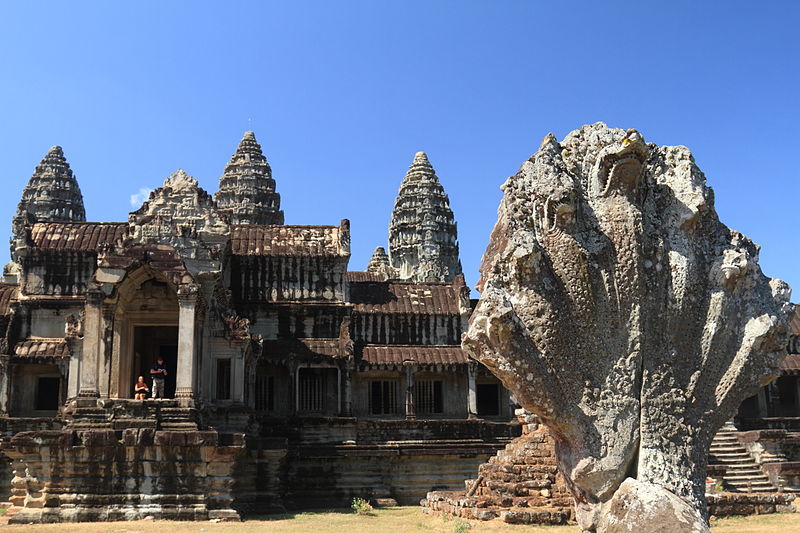You haven’t really experienced the awe-inspiring nature of Angkor Wat in Cambodia till you have explored it first-hand. To help prepare you for a visit here’s a look into its history.
A Huge 12th Century Landmark
Built during the Khmer Empire, this temple complex dates back to the 12th century, constructed under the patronage of Emperor Suryavarman II. A short drive from properties such as Anantara Angkor Resort, the complex covers an area of around 400 acres and is the largest of its kind in the world!

The Khmer Empire’s Ancient Capital
Apart from being the state temple, this sacred site was also the political centre of the Khmer Empire and served as its capital. Those visiting from a nearby budget or luxury hotel in Siem Reap are bound to find it interesting that though it was originally a Hindu temple, it later became a Buddhist site.
Distinctive Design and Architecture
A UNESCO World Heritage Site, Angkor Wat was primarily built using sandstone blocks. It features a wide moat outside its 15-foot high wall, while the temple’s highest point reaches close to a height of 70 feet. The site’s five towers are believed to represent the peaks of Mount Meru, the abode of the gods.
Some Key Highlights at the Site
Those spending time at the site will come across elements that truly stand out like the stunning bas-reliefs including the famed Churning of the Ocean of Milk Gallery. You can also observe close to 2,000 heavenly nymphs called “apsaras”, carefully carved into the walls, which lend to the temple’s charm.
Related posts
HOT TOPICS
Archives
Categories
- Activities (826)
- Adventures (104)
- Dining (41)
- Events & Festivals (44)
- Kids Pools (6)
- Playgrounds (2)
- Restaurants (9)
- Theme Parks (30)
- Destinations (2,074)
- Family Travel Tips (731)

